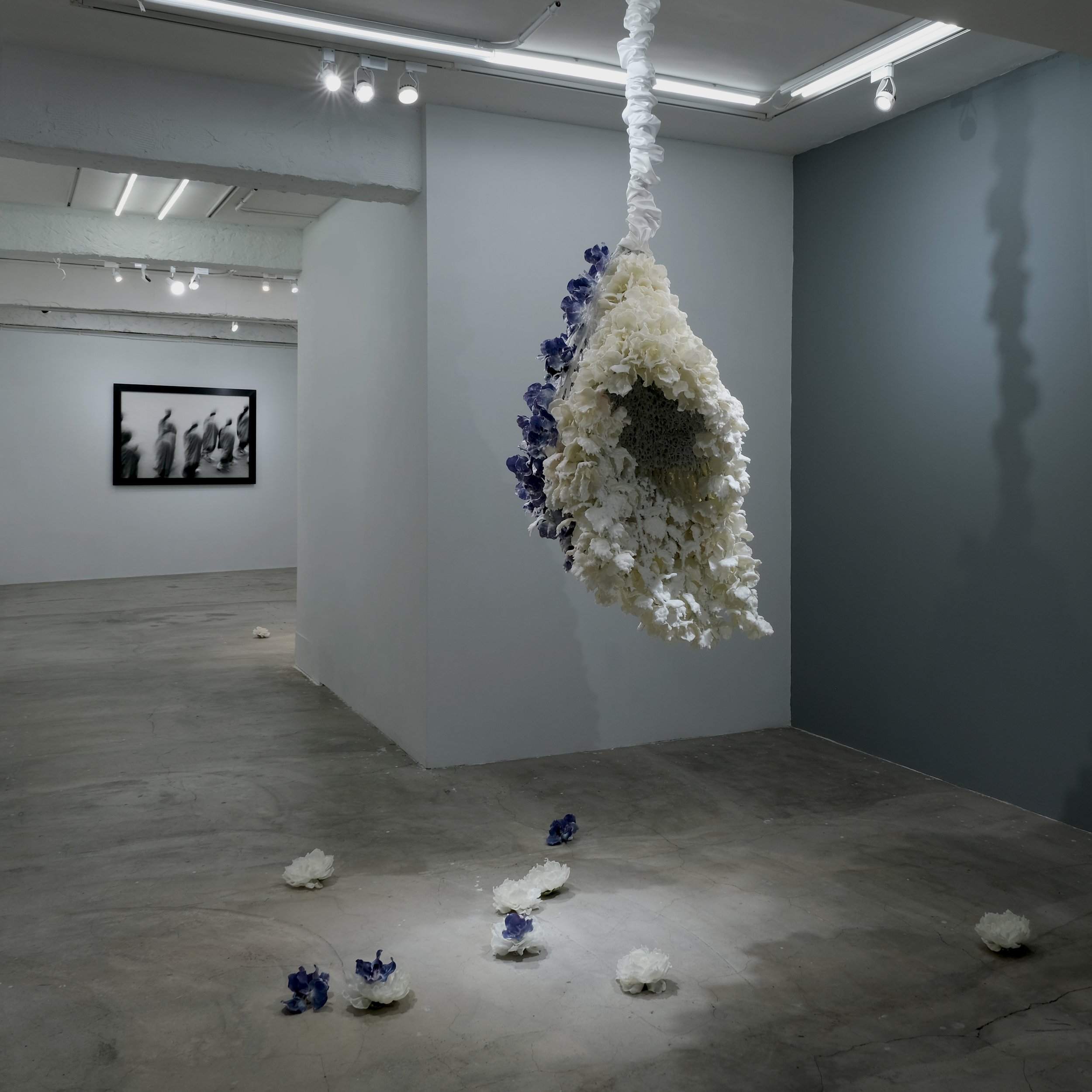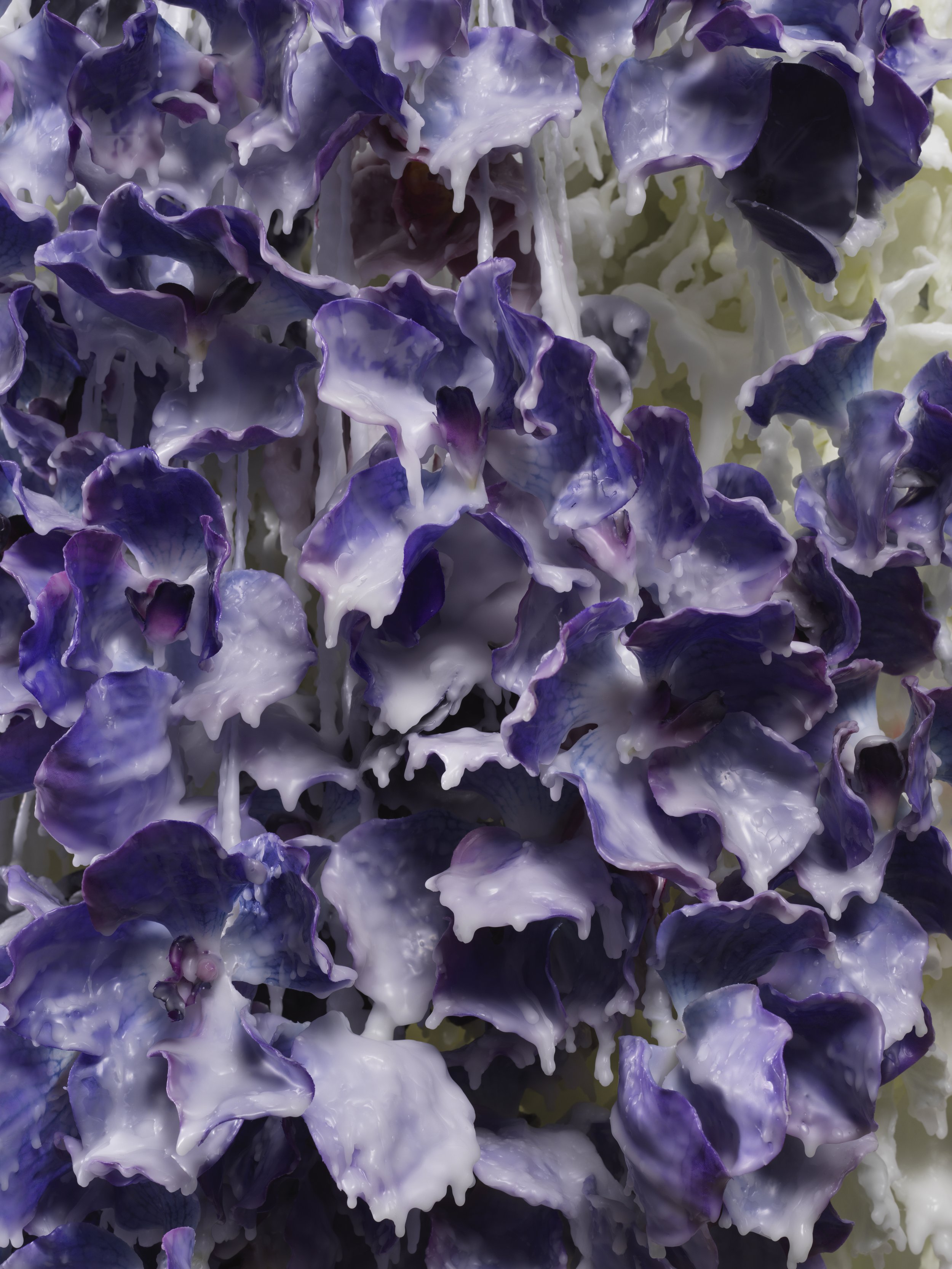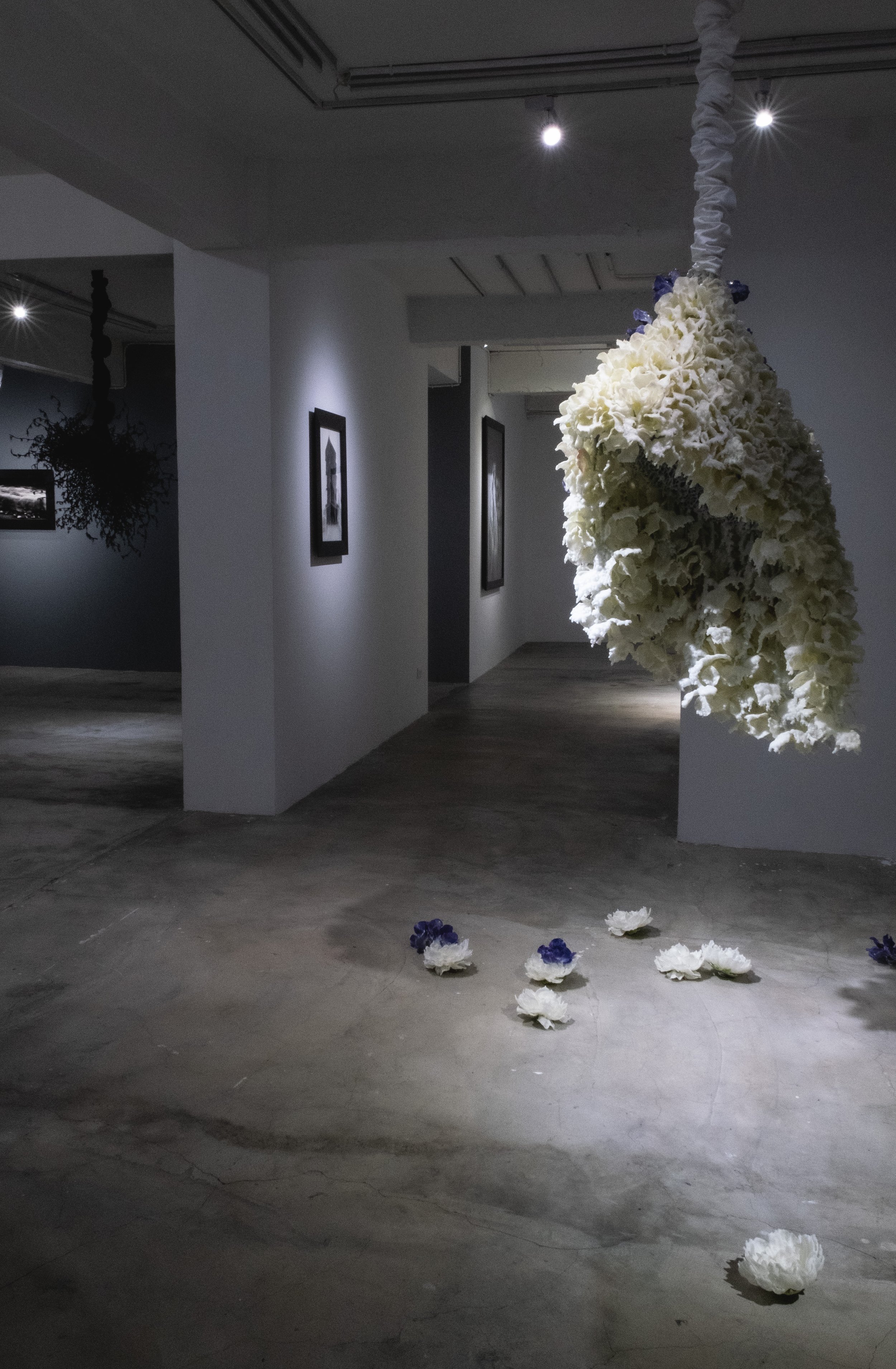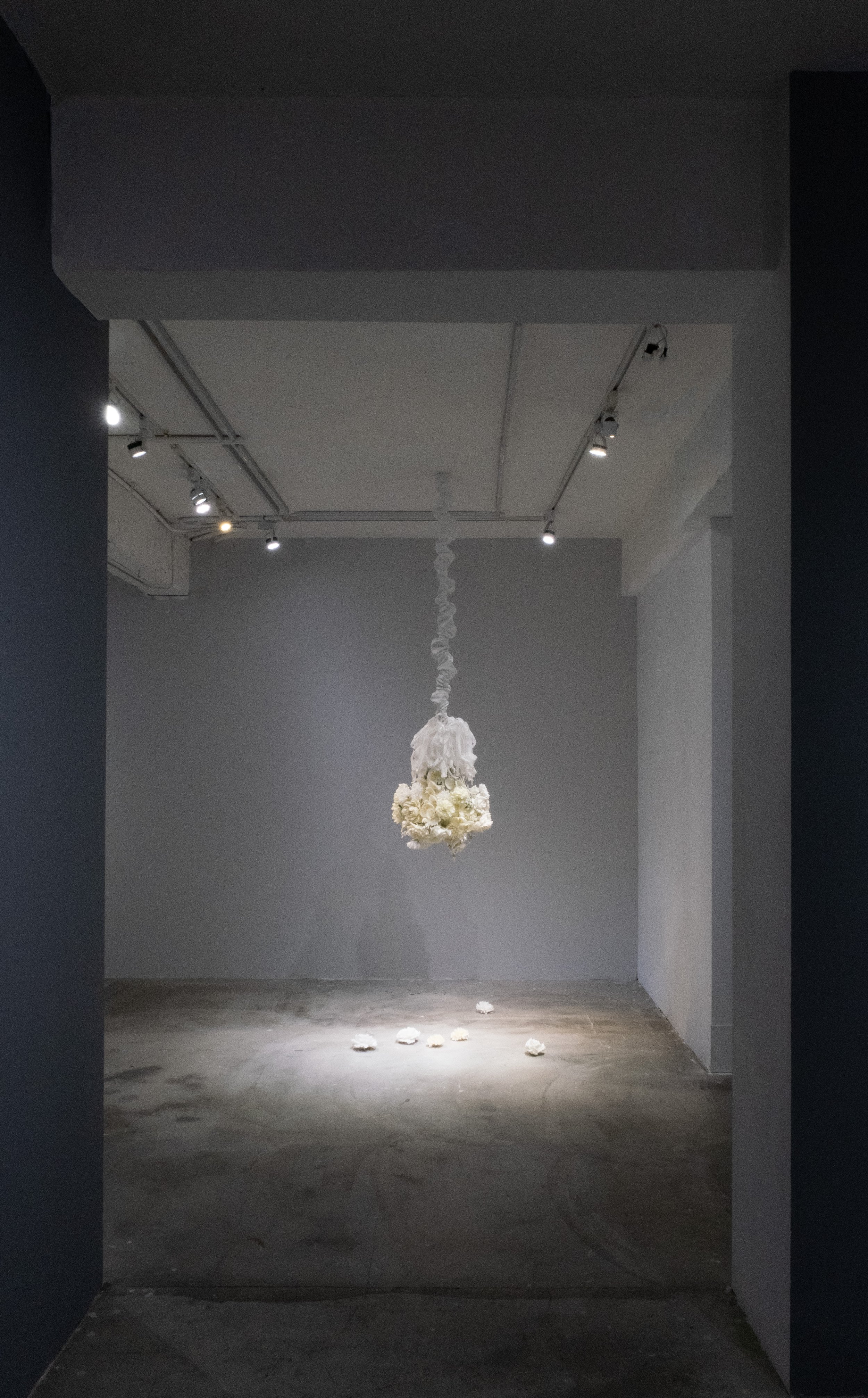North Star : Solo Exhibition of Petah Coyne





North Star, Petah Coyne’s latest solo exhibition at Nunu Fine Art in Taipei, Taiwan draws inspiration from the night sky and the wonderous, universal forces that shape life on Earth. Fixed directly above Earth’s north pole and pointing toward true north is Polaris, known as the “North Star.” Considered a symbol of good luck, the North Star, which has existed throughout time, has been relied upon by sailors and travelers for navigation; lost souls need only to look above and a path forward will be revealed. This celestial compass also functions as a spiritual guide for those in search of purpose and stability. Comforted by its steadfast nature, Coyne created Untitled #1527 (North Star), 2021-23, a new hanging wax sculpture from which this solo exhibition takes its name. Taiwan, the orchid capital of the world, is the exhibition’s North Star, which Coyne embraces in this vivid new work, made from layers of wax-dipped white and purple silk orchids. Conical in shape, Untitled #1527 (North Star), 2021-23, cradles the open air around it, urging viewers to look up and within the sculpture, as well as themselves. This is Coyne’s first work to be named after something that exists outside of our world, yet heavily influences life on Earth.
North Star includes artworks made from wax, black sand, feathers, and glass, in addition to photography. Literature, Coyne’s own creative North Star, continues to shape her artistic career, made evident by the works on view in the exhibition, all of which offer hope despite adversity. Returning to Taiwan after seven years, Coyne’s world, and the world at large has since changed, rocked by a plethora of political and earthly shocks. Yet the North Star continues to aid humanity by maintaining course, and each instance of realignment toward purpose and integrity is a small (or sometimes large) miracle.
Black sand sculpture Untitled #1459 (Yōko Ogawa: The Memory Police), 2019, is titled after Yōko Ogawa’s science fiction novel about an island where, enforced by the Memory Police, items and concepts disappear physically, causing inhabitants to forget their existence. With nothing tangible to spark their memories, the stars guide the novel’s protagonists in their resistance. A dystopian novel The Memory Police is inherently dark; however, a thread of hope runs throughout, with the characters finding inventive ways to savor what’s left of life. Similar to how natural disasters destroy our belongings, leaving us to ponder what and who are the most essential in their wake, Ogawa forces us to reevaluate our most cherished possessions, as it is memory, even more so than tangibility, that imbues them with meaning.
Untitled #1419 (Bruno Schulz: The Street of Crocodiles), 2016, a hanging white wax bouquet festooned with ribbon is Coyne’s tribute to Bruno Schulz, a writer, teacher, and artist, whose creative brilliance made him a standout figure in his community and country. Introduced to Schulz’s novels by her mother, who read them to her before bedtime as a child, Coyne was mesmerized by his surreal depictions. Transported to a semi-conscious state, imagination and literature elicited a powerful spiritual response within her, making Schulz’s stories unforgettable and worthy of revisiting as an adult. A Polish Jew, Schulz’s life and career was sadly cut short by a Nazi officer during World War. Still, the potency of his work lives on in those inspired by his wit.
Alluring and foreboding, the phenomenon of spring snow suggests an imbalance in our natural world. Using light and shadow to produce a shimmering illusion of depth and ethereality, Untitled #1290 (Spring Snow), 2008-2020, reminds us to recognize the momentary beauty and poeticism of such occurrences. This sculpture is named after Yukio Mishima’s Spring Snow, which follows a tragic, forbidden romance between two young lovers. The peak of their relationship is represented by the titular scene in which the two travel through the snow in a sleigh, surrounded by flowers and trees dusted with fresh snowfall. In this moment, the young couple is offered a rare moment of privacy as they disappear into the landscape; the North Star shines brightly down on them, even if only temporarily.
Amidst these hanging works, two new sculptures of wax flowers encased in gleaming hand-blown vitrines act as small beacons of light, guiding viewers through the gallery. Untitled #1560 (Flannery O’Connor), 2023, showcases a cluster of vivid purple orchids, which look like butterflies just being born. O’Connor, motivated by her powerful intuition and observational skills, always knew her “true north.” Connected to birds and animals since childhood, Flannery O’Connor was especially fond of peacocks, which she raised and were prevalent in her life and stories. Her style is unpredictably dark, similar to that of Yōko Ogawa. The second vitrine, Untitled #1557 (Joan Didion), 2023, gestures at Joan Didion's (1934-2021) bravery, characters, and passion. With their inspiration, the metaphorical North Star urges us to persevere and remain curious about ourselves and the world around us. Just as it orients travelers toward their destination, art, Coyne believes, can center our souls with its vulnerability, beauty, and enduring legacy.
Artist
At Taipei Dangdai, Instagram Bait Mingled With 20th Century Masterpieces, Catering to the Eclectic Tastes of Two Generations of Wealth
Frederik Balfour, May 15, 2023 full text



